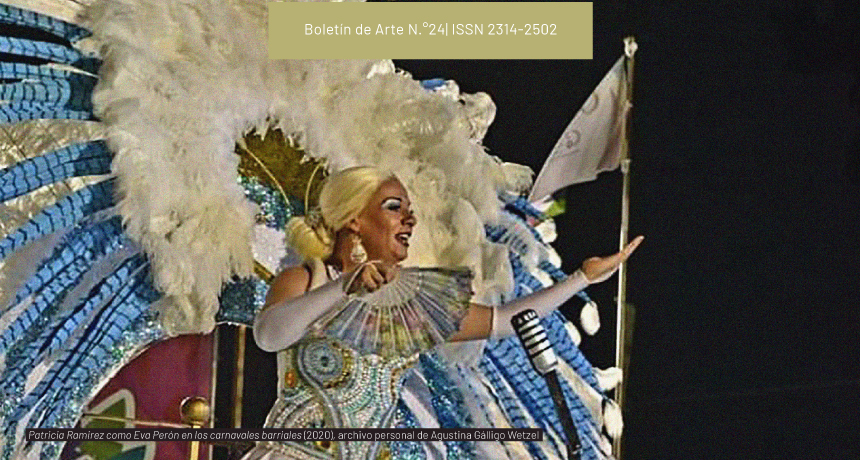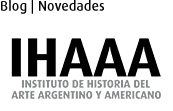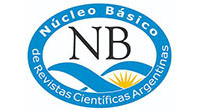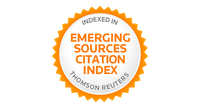Towards a Feminist Museum of Theatrical Archeology
Sentimental Cartography of La Plata's City Theater
DOI:
https://doi.org/10.24215/23142502e052Abstract
This work approached three plays from the independent theater system of La Plata, from a critical feminist perspective. In order to do so, the concept of Feminist Museum (Pollock) was used, analyzing the possible relationships between Cuerpos A banderados (1998); Ansío los Alpes. Así nacen los lagos (2016) y Lo que se escapa (2019). We sought to build a Sentimental Cartography (Rolnik), based on the author’s experience as a spectator of these performances. The feelings of astonishment and discomfort (Ahmed) that they caused, were explored, stressing the experience, and relating these performances, outside the traditional scripts of art history. It was concluded that linking affection, the public and the private, the personal and the social, result in a broader, more complex and at the same time close aesthetic approach.Downloads
References
Ahmed, S. (2015). La política cultural de las emociones. Universidad Nacional Autónoma de México.
Ahmed, S. (2018). Vivir una vida feminista. Bellaterra.
Catani, B. (Directora). (1998). Cuerpos A banderados [Obra de teatro]. El Escudo, La Plata.
Del Moral Espín, L. (2012). En transición. La epistemología y filosofía feminista de la ciencia ante los retos de un contexto de crisis multidimensional. e-cadernos CES, (18), 51-80. https://doi.org/10.4000/eces.1521
Del Mármol, M. (2016). Una corporalidad expandida. Cuerpo y afectividad en la formación de los actores y actrices en el circuito teatral independiente de la ciudad de La Plata [Tesis de doctorado, Facultad de Filosofía y Letras de la Universidad de Buenos Aires]. http://repositorio.filo.uba.ar/handle/filodigital/4096
Di Sarli N. (2013). Historia del teatro en el período fundacional de La Plata (1890-1930): identidad urbana y proyecto artístico [Tesis de maestría, Facultad de Bellas Artes de la Universidad Nacional de La Plata] http://sedici.unlp.edu.ar/handle/10915/36340
Donnantuoni, C. y García Sathicq, J. (Directoras). (2019). Lo que se escapa. [Obra de teatro]. Teatro Municipal Coliseo Podestá, La Plata.
Dubatti, J. (2008). Cartografia teatral: introducción al teatro comparado. Atuel.
Hernández, V. (Directora). (2016). Ansío los Alpes. Así nacen los lagos. [Obra de teatro]. NN Galería, La Plata.
Mannarino J. M. (2010). De los salones hacia la calle (Breve historia del teatro platense). Telón de fondo, 6(11), 1-9. https://doi.org/10.34096/tdf.n11.9265
Miller K. y Gold, M. C. (2016). Introducción. Revista Iberoamericana, 82(257), 675-683. https://doi.org/10.5195/reviberoamer.2016.7419
Pelletieri, O. (1997). Una historia interrumpida. Teatro Argentino Moderno (1949 – 1976). Galerna.
Pollock, G. (2010). Encuentros en el museo feminista virtual. Tiempo, espacio y el archivo. Cátedra.
Pollock, G. (2013). Visión y Diferencia. Feminismo, feminidad e historias del arte. Fiordo.
Prieto, V. L. (2013). Para repensar nuestras prácticas feministas de investigación: poniendo en diálogo a Sandra Harding, Maria Mies y Teresita de Barbieri. Zona Franca, Revista del Centro de Estudios Interdisciplinario sobre Mujeres, 21(22), 13-20.
Radice, G. (2016). Cartografías de la Fragmentación. Teatro Posdramático Platense. Malisia.
Rolnik, S. (2013). Cartografía Sentimental: transformaciones contemporáneas del deseo (fragmento). Laboratorio corporal. http://radiocqueer.blogspot.com/2013/03/cartografiasentimental-transformacoes.html
Tacetta, N. (2017). Archivo de intensidades: entre el museo feminista virtual y la reescritura de la historia. Cuadernos de Filosofía, (69), 171-189.
Downloads
Published
How to Cite
Issue
Section
License
Copyright (c) 2023 María Guimarey

This work is licensed under a Creative Commons Attribution-NonCommercial-ShareAlike 4.0 International License.
According to these terms, the material can be copied and redistributed by any means or in any format as long as a) the author and original source of the publication are quoted (magazine and URL of the work), access to the license is provided and whether changes have been made is mentioned; and b) the material is not used for commercial purposes.
The cession of non-exclusive rights means that after the publication (post print) in Boletín de Arte the authors can publish their work in any language, means and format; in such cases it must be mentioned that the material was originally published in this magazine.
Such cession also means the authorization of the authors for the work to be collected by SEDICI, the institutional archive of the National University of La Plata, and to be spread in the databases that the editorial team considers appropriate to increase the visibility of the publication and its authors.
Moreover, the magazine encourages the authors to deposit their productions in other institutional and thematic archives under the principle that offering the society the scientific and academic production without any restrictions contributes to a greater exchange of the global knowledge.
































